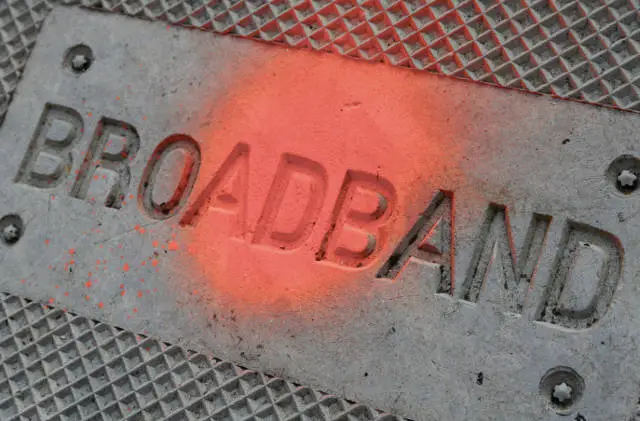Cabinet members will be asked by officers to approve a request next week to appoint BT as the council’s preferred supplier for the roll-out of rural broadband.
If approved, the Isle of Wight council will agree to pay £3.09m for “installation of Next Generation Access (NGA) and basic broadband infrastructure” to those parts of the Island where there is “currently no commercial case for the large scale investment necessary to provide these services”.
BT’s own capital investment in the project will be just £1.56 million, an investment ratio of 24%. This is considered to be very low.
Additional financial costs
In addition, the council will need to find £200,000 to fund the team to manage the project, including a Project Lead, Project Manager and admin support.
The council say the appointment of the project team is important to mitigate against the risk of BT overcharging for works and seeking to draw down the innovation fund inappropriately.
Boost for 20,000 households
Papers for the meeting say the project will benefit 20,000 premises where there is no current commercial case to provide NGA broadband.
At its conclusion in September 2015 it is expected that 99% of all premises will have access to NGA broadband services and all will have broadband speeds of at least 2 mbps (megabits per second).
Challenged by local providers
Last month John Irvine, the boss of Island-based broadband supplier, WightFibre, said the £3m the council give to BT would be wasted, adding that his company would be expanding to those areas anyway.
The council say in their paperwork it was not possible to confirm whether and when plans by other companies (two are referred to) planning to cover these areas “would come to fruition”.
They go on to say that they were therefore discounted from the process.
£98,000 marketing suggestion rejected
The papers also reveal that BT are suggesting the council fund a dedicated Website and marketing material to promote the service. This is expected to cost the council £98,000 over and 18 month period.
BT has suggested also an enhanced demand stimulation package intended to drive take-up beyond 20% which would be the trigger to create financial clawback from the project for the benefit of the council. This would include an Isle of Wight branded web site, print-ready branded flyers and posters, business awareness and training material and additional press and PR support. This package of demand stimulation would cost the council an additional £98,000 over an 18 month period.
The council say it would be more prudent to work with BT on their marketing, which is at no cost to the council and look to enhance demand stimulation through other means.
Innovation Fund
It’s also stated in the paperwork that as there are a limited number of premises, BT will only be utilising £4.98m of the public subsidy, as opposed to the £6.18m available through the council funding and BDUK (the Government established organisation) grant.
Therefore £1.2m will be placed in an ‘Innovation Fund’, which will remain under the control of the council and if not spent by the end of the project will be split equally between the council and BDUK.
The paperwork states,
The Innovation Fund is intended as a mechanism by which the delivery of the project can be adjusted or amended in order to increase infrastructure coverage and thereby exploit any opportunities that arise or are identified as the project is rolled out. These may be, for example, because of developments in technology or other inward investments to the Island which require access to NGA broadband.
Delays in BT’s roll-out
It has been widely reported that BT’s rural broadband roll-out has fallen behind schedule and received criticism from the National Audit Office.
It was said that only nine of 44 rural areas would reach targets for high-speed Internet by 2015, and four areas could also miss a revised 2017 target.
BT’s tender says “Planned completion of the main roll out by September 2015 ahead of many other areas of the country.”
Full details of what Cabinet members are being asked to approve can be found in the paper embedded below for your convenience
Image: Gavin St. Ours under CC BY 2.0





